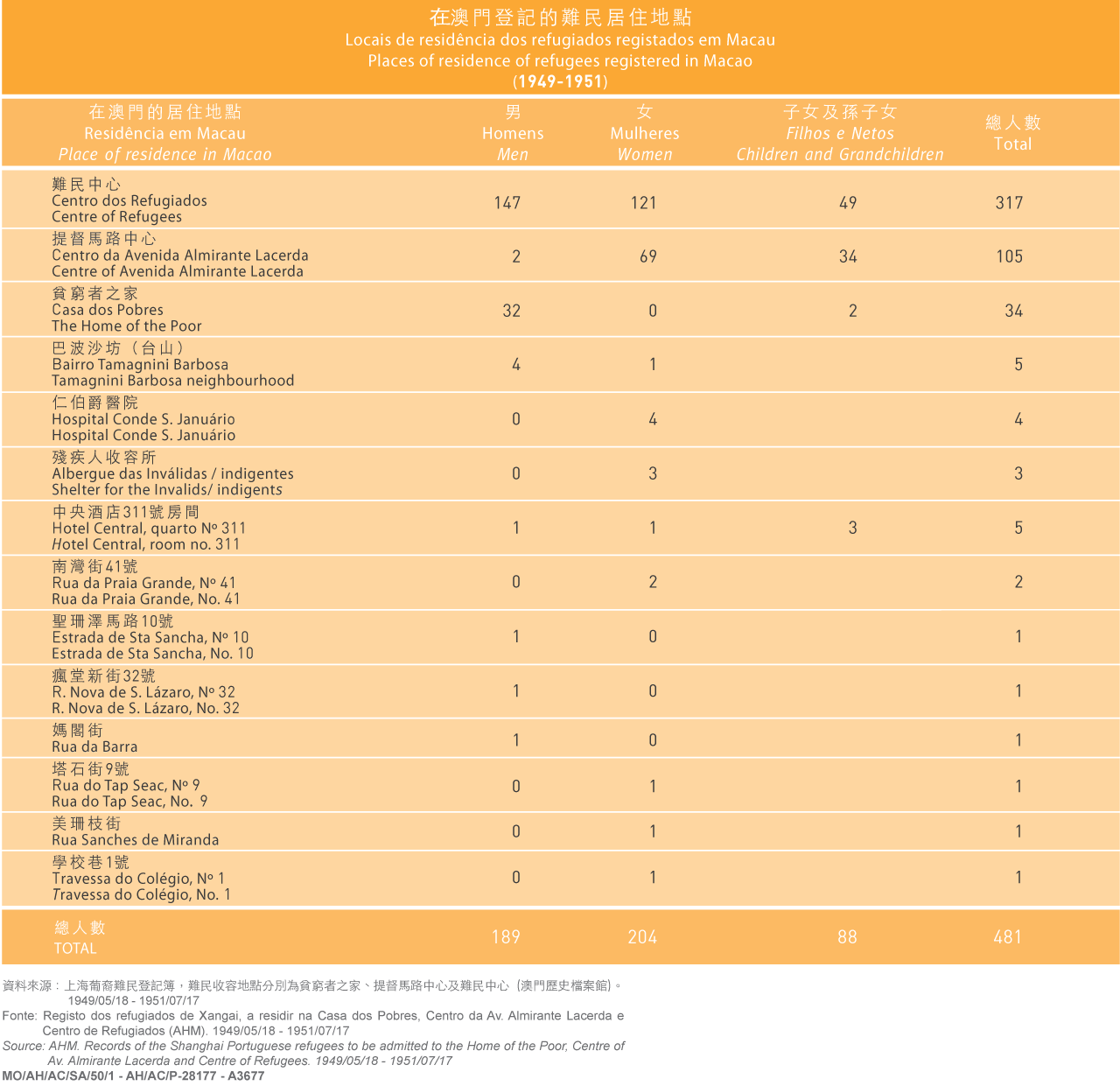
Between 1949 and 1951, more than 94% of refugees were accommodated in three places: Centre of Refugees for both male and female refugees; Centre of Avenida Almirante Lacerda almost exclusively for female refugees; and the Home of the Poor where only male refugees were accommodated.
Subsequently, most refugees, who were offered basic conditions for their survival in the territory, including accommodation, food, hygiene and healthcare, were housed in three centres:
- Centre No. 1 – Home of the Poor (Canidrome)
- Centre No. 2 – Portuguese-Chinese (Calçada do Gamboa)
- Centre No. 3 – Rua Nova do Comércio